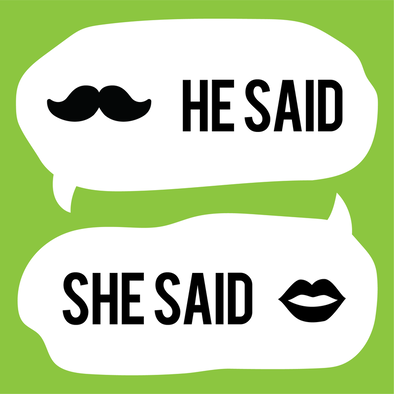 In books and essays, dialogue often requires tags to let the reader know who's talking. The most common tags by far are he said and she said, hence this spoonful's title. But tags can also include names and use more descriptive words like screamed, yelled, called, and whispered. Because comma usage with dialogue tags is a wee bit complicated, this topic will be spread over the next few spoonfuls. First up: COMMA RULE #7: WHEN DIALOGUE TAGS COME FIRST Here are the points to remember when the dialogue tag comes first. 1) The comma is placed after the tag and before the beginning quotation mark. 2) The period, exclamation mark, or question mark will go inside the closing quotation mark, at the end of the sentence. 3) Make sure the sentences start with capital letters. Now for some useful examples. He said, "I'm taking AP History next year." John asked, "What time are we meeting?" Mr. Mills screamed, "Get off my grass!" Charles Dickens wrote, "This is a world of action, and not for moping and droning in." FOOD FOR THOUGHT: Why are he said and she said so popular? Because they're so simple, you barely notice them when you read. If a writer chooses a more dramatic or descriptive tag, it will definitely be noticed. You can avoid tags completely if you identify an action for the character who will speak. In general, it's nice to mix it up. And that's a wrap! Next time, I'll cover what to do when the dialogue tag comes AFTER the dialogue. Sincerely, Laura Fineberg Cooper
5 Comments
Gerald Gould
5/20/2019 07:34:00 am
The period inside the quotation marks is often forgotten or placed outside. This was something that was stressed in school so many decades ago. Thanks for the reminder.
Reply
Marianne Knowles
5/20/2019 09:17:29 pm
She said, "Thanks for uncomplicating a complicated topic!"
Reply
5/21/2019 07:51:29 am
I like that the word 'said' is considered invisible, that everyone pretty much just skips over it and listens to what's being said instead.
Reply
Leave a Reply. |
Welcome to
|
 RSS Feed
RSS Feed
